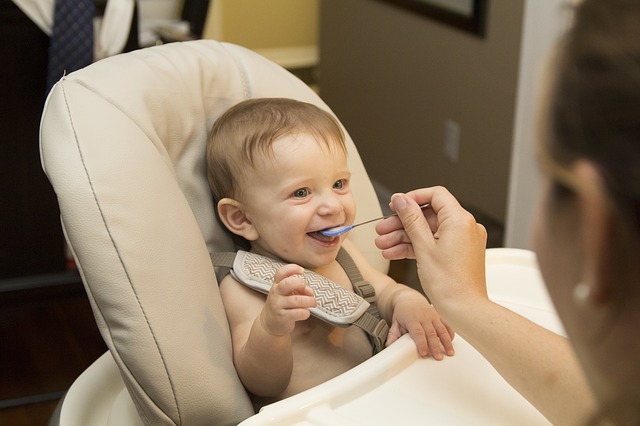Introducing your baby to solids can be an exciting yet nerve-wracking experience. You may be thinking: What is the best way to introduce new foods and make my child a happy, healthy eater?
Responsive Feeding is an approach that helps foster your child’s awareness of his or her hunger or fullness and assists in developing a healthy eater. Responsive feeding requires the parent to watch and monitor their child for hunger cues and offer their child food when those cues occur. Likewise, the parent will monitor their child for fullness cues and stop feeding.
The first step to responsive feeding is learning about the various cues that babies may provide. Hunger cues for babies may include fussing or crying, moving his or her head toward the bottle or spoon, focusing on the food, and excitement when food is offered. Your baby may indicate that he or she is full by decreasing the rate of sucking or eating, paying more attention to the environment around her, and turning her head away from the food.
Additionally, responsive feeding follows the mindset that the parent provides the food and the child decides what he or she will eat and how much they will eat. This approach not only sets up your child for healthy eating habits, but it is also a great way for caregivers to build trust with their babies.
Get a Free Online Assessment
Looking for an expert opinion on your child's needs? Fill out a 3 minute questionnaire and receive a personal evaluation from our staff



